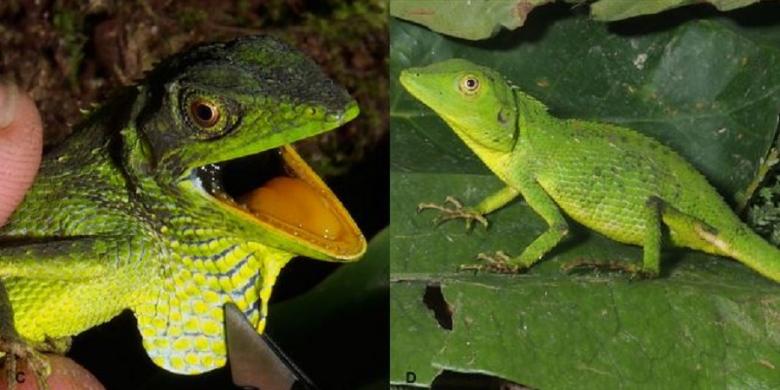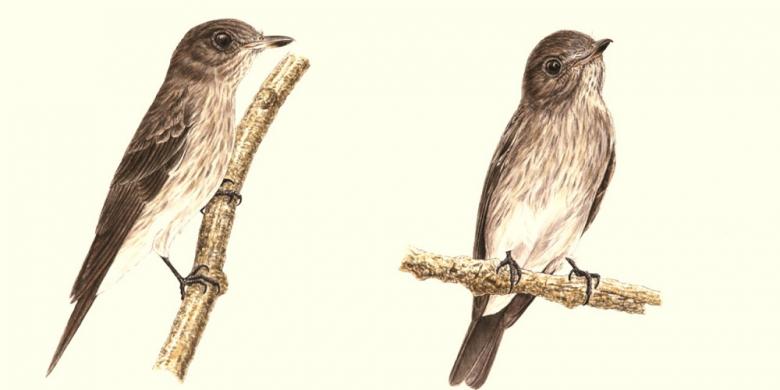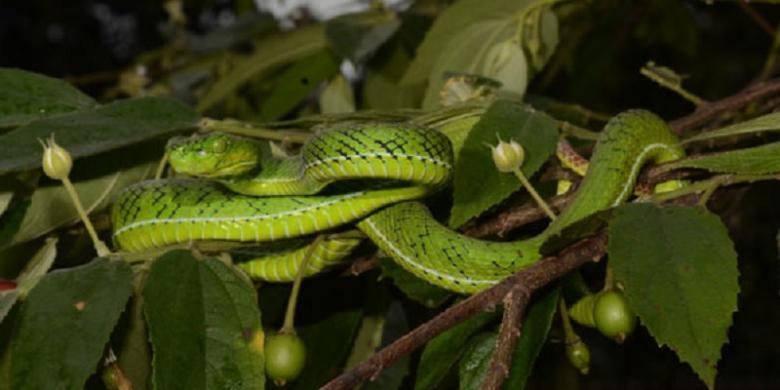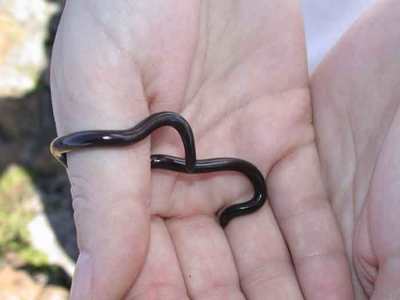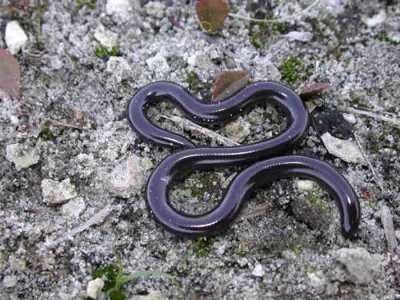Kanguru Indonesia Di Papua
Kanguru ternyata tidak hanya terdapat di Autralia
saja. Ternyata di Indonesia, tepatnya di Papua, juga memiliki Kangguru,
spisies yang mempunyai ciri khas kantung di perutnya (Marsupialia).
Kanguru Papua ini memiliki ukuran yang lebih kecil dibandingkan dengan
Kanguru Australia. Sayang Kanguru yang terdiri atas Kanguru tanah dan
Kanguru pohon ini mulai langka sehingga termasuk binatang (satwa) Indonesia yang dilindungi dari kepunahan.
Kangguru Papua terdiri atas dua genus yaitu dendrolagus (Kanguru Pohon) dan thylogale (Kanguru Tanah). Kanguru pohon sebagian besar masa hidupnya ada di pohon. Sekalipun begitu satwa tersebut juga sering turun ke tanah, misalnya bila sedang mencari air minum. Moncong kanguru pohon bentuknya lebih runcing jika dibandingkan dengan moncong kanguru darat. Ekornya agak panjang dan bulat, berbulu lebat dari pangkal sampai ekornya. Sedangkan pada kanguru darat kedua kaki depannya lebih pendek dari pada kaki belakangnya, Cakarnya pun lebih kecil. Moncongnya agak tumpul dan tidak berbulu. Ekornya makin meruncing ke ujung, bulunya tidak begitu lebat.
Kangguru Tanah (lau-lau atau paunaro):
 Thylogale brunii (Dusky Pademelon)
merupakan jenis kangguru terkecil yang ada di dunia. Beratnya antara
3-6 kilogram, tetapi ada juga yang 10 kilogram. Panjang tubuhnya sekitar
90 sentimeter dengan lebar sekitar 50 sentimeter. Satwa langka yang
dilindungi ini adalah hewan endemik Papua, dan hanya terdapat di Papua
di kawasan dataran rendah di hutan-hutan di wilayah Selatan Papua, dan
Papua Niugini. Di Indonesia Thylogale brunii terdapat antara lain di Taman Nasional Wasur (Kabupaten
Thylogale brunii (Dusky Pademelon)
merupakan jenis kangguru terkecil yang ada di dunia. Beratnya antara
3-6 kilogram, tetapi ada juga yang 10 kilogram. Panjang tubuhnya sekitar
90 sentimeter dengan lebar sekitar 50 sentimeter. Satwa langka yang
dilindungi ini adalah hewan endemik Papua, dan hanya terdapat di Papua
di kawasan dataran rendah di hutan-hutan di wilayah Selatan Papua, dan
Papua Niugini. Di Indonesia Thylogale brunii terdapat antara lain di Taman Nasional Wasur (Kabupaten
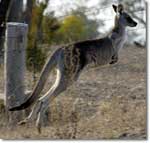
Merauke) dan Taman Nasional Gunung Lorentz (Mimika).
Thylogale stigmata (red-legged pademelon) merupakan jenis yang hidup di daerah pantai selatan Papua. Thylogale stigmata mempunyai warna kulit tubuh lebih cerah yaitu kuning kecokelatan.
 Thylogale brownii (Brown’s pademelon). Selain di Papua, binatang ini juga terdapat di Papua New Guinea.
Thylogale brownii (Brown’s pademelon). Selain di Papua, binatang ini juga terdapat di Papua New Guinea.
Kangguru pohon (lau-lau):
Dendrolagus pulcherrimus (Kanguru Pohon Mantel Emas) merupakan sejenis kanguru pohon yang hanya ditemukan di hutan pegunungan pulau Irian. Spesies ini memiliki rambut-rambut halus pendek berwarna coklat muda. Leher, pipi dan kakinya berwarna kekuningan. Sisi bawah perut berwarna lebih pucat dengan dua garis keemasan dipunggungnya. Ekor panjang dan tidak prehensil dengan lingkaran-lingkaran terang.
dipunggungnya. Ekor panjang dan tidak prehensil dengan lingkaran-lingkaran terang.
Penampilan Kanguru-pohon Mantel-emas serupa dengan Kanguru pohon Hias. Perbedaannya adalah Kanguru-pohon Mantel-emas memiliki warna muka lebih terang atau merah-muda, pundak keemasan, telinga putih dan berukuran lebih kecil dari Kanguru-pohon Hias. Beberapa ahli menempatkan Kanguru-pohon Mantel-emas sebagai subspesies dari Kanguru-pohon Hias.
Kanguru-pohon Mantel-emas merupakan salah satu jenis kanguru-pohon yang paling terancam kepunahan diantara semua kanguru pohon. Spesies ini telah punah di sebagian besar daerah habitat aslinya
Dendrolagus goodfellowi (disebut Kanguru Pohon Goodfellow atau kanguru pohon hias atau Goodfellow’s Tree-kangaroo) merupakan jenis kanguru pohon yang paling sering ditemui. Kulit tubuhnya berwarna

cokelat sawo matang dan banyak terdapat di hutan hujan di pulau Papua
Dendrolagus mbaiso (disebut sebagai Kanguru Pohon Mbaiso atau Dingiso) kanguru ini ditemukan di hutan montane yang tinggi dan subalpine semak belukar di Puncak Sudirman. Kanguru pohon ini mempunyai bulu hitam dengan kombinasi putih di bagian dadanya.
Dengrolagus dorianus atau disebut sebagai Kangguru Pohon Ndomea atau Doria’s Tree-kangaroo.
Dendrolagus ursinus (disebut Vogelkop Tree-kangaroo atau Kanguru Pohon Nemena) merupakan kanguru pohon yang paling awal terklasifikasikan. Mempunyai telinga panjang dan ekor panjang dan hitam.

Dendrolagus inustus disebut juga sebagai Kanguru Pohon Wakera atau Grizzled Tree-kangaroo.
Dendrolagus stellarum disebut juga sebagai Seri’s Tree-kangaroo. Kanguru pohon ini terdapat di Tembagapura.
Klasifikasi: Kerajaan: Animalia; Filum: Chordata; Kelas: Mammalia; Infrakelas: Marsupialia; Ordo: Diprotodontia; Famili: Macropodidae Genus: Dendrolagus dan Thylogale
Kangguru Papua terdiri atas dua genus yaitu dendrolagus (Kanguru Pohon) dan thylogale (Kanguru Tanah). Kanguru pohon sebagian besar masa hidupnya ada di pohon. Sekalipun begitu satwa tersebut juga sering turun ke tanah, misalnya bila sedang mencari air minum. Moncong kanguru pohon bentuknya lebih runcing jika dibandingkan dengan moncong kanguru darat. Ekornya agak panjang dan bulat, berbulu lebat dari pangkal sampai ekornya. Sedangkan pada kanguru darat kedua kaki depannya lebih pendek dari pada kaki belakangnya, Cakarnya pun lebih kecil. Moncongnya agak tumpul dan tidak berbulu. Ekornya makin meruncing ke ujung, bulunya tidak begitu lebat.
Kangguru Tanah (lau-lau atau paunaro):
 Thylogale brunii (Dusky Pademelon)
merupakan jenis kangguru terkecil yang ada di dunia. Beratnya antara
3-6 kilogram, tetapi ada juga yang 10 kilogram. Panjang tubuhnya sekitar
90 sentimeter dengan lebar sekitar 50 sentimeter. Satwa langka yang
dilindungi ini adalah hewan endemik Papua, dan hanya terdapat di Papua
di kawasan dataran rendah di hutan-hutan di wilayah Selatan Papua, dan
Papua Niugini. Di Indonesia Thylogale brunii terdapat antara lain di Taman Nasional Wasur (Kabupaten
Thylogale brunii (Dusky Pademelon)
merupakan jenis kangguru terkecil yang ada di dunia. Beratnya antara
3-6 kilogram, tetapi ada juga yang 10 kilogram. Panjang tubuhnya sekitar
90 sentimeter dengan lebar sekitar 50 sentimeter. Satwa langka yang
dilindungi ini adalah hewan endemik Papua, dan hanya terdapat di Papua
di kawasan dataran rendah di hutan-hutan di wilayah Selatan Papua, dan
Papua Niugini. Di Indonesia Thylogale brunii terdapat antara lain di Taman Nasional Wasur (Kabupaten
Merauke) dan Taman Nasional Gunung Lorentz (Mimika).
Thylogale stigmata (red-legged pademelon) merupakan jenis yang hidup di daerah pantai selatan Papua. Thylogale stigmata mempunyai warna kulit tubuh lebih cerah yaitu kuning kecokelatan.
 Thylogale brownii (Brown’s pademelon). Selain di Papua, binatang ini juga terdapat di Papua New Guinea.
Thylogale brownii (Brown’s pademelon). Selain di Papua, binatang ini juga terdapat di Papua New Guinea.Kangguru pohon (lau-lau):
Dendrolagus pulcherrimus (Kanguru Pohon Mantel Emas) merupakan sejenis kanguru pohon yang hanya ditemukan di hutan pegunungan pulau Irian. Spesies ini memiliki rambut-rambut halus pendek berwarna coklat muda. Leher, pipi dan kakinya berwarna kekuningan. Sisi bawah perut berwarna lebih pucat dengan dua garis keemasan
 dipunggungnya. Ekor panjang dan tidak prehensil dengan lingkaran-lingkaran terang.
dipunggungnya. Ekor panjang dan tidak prehensil dengan lingkaran-lingkaran terang.Penampilan Kanguru-pohon Mantel-emas serupa dengan Kanguru pohon Hias. Perbedaannya adalah Kanguru-pohon Mantel-emas memiliki warna muka lebih terang atau merah-muda, pundak keemasan, telinga putih dan berukuran lebih kecil dari Kanguru-pohon Hias. Beberapa ahli menempatkan Kanguru-pohon Mantel-emas sebagai subspesies dari Kanguru-pohon Hias.
Kanguru-pohon Mantel-emas merupakan salah satu jenis kanguru-pohon yang paling terancam kepunahan diantara semua kanguru pohon. Spesies ini telah punah di sebagian besar daerah habitat aslinya
Dendrolagus goodfellowi (disebut Kanguru Pohon Goodfellow atau kanguru pohon hias atau Goodfellow’s Tree-kangaroo) merupakan jenis kanguru pohon yang paling sering ditemui. Kulit tubuhnya berwarna

cokelat sawo matang dan banyak terdapat di hutan hujan di pulau Papua
Dendrolagus mbaiso (disebut sebagai Kanguru Pohon Mbaiso atau Dingiso) kanguru ini ditemukan di hutan montane yang tinggi dan subalpine semak belukar di Puncak Sudirman. Kanguru pohon ini mempunyai bulu hitam dengan kombinasi putih di bagian dadanya.
Dengrolagus dorianus atau disebut sebagai Kangguru Pohon Ndomea atau Doria’s Tree-kangaroo.
Dendrolagus ursinus (disebut Vogelkop Tree-kangaroo atau Kanguru Pohon Nemena) merupakan kanguru pohon yang paling awal terklasifikasikan. Mempunyai telinga panjang dan ekor panjang dan hitam.

Dendrolagus inustus disebut juga sebagai Kanguru Pohon Wakera atau Grizzled Tree-kangaroo.
Dendrolagus stellarum disebut juga sebagai Seri’s Tree-kangaroo. Kanguru pohon ini terdapat di Tembagapura.
Klasifikasi: Kerajaan: Animalia; Filum: Chordata; Kelas: Mammalia; Infrakelas: Marsupialia; Ordo: Diprotodontia; Famili: Macropodidae Genus: Dendrolagus dan Thylogale







